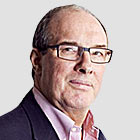'People will forgive you for being wrong, but they will never forgive you for being right - especially if events prove you right while proving them wrong.' Thomas Sowell
Search This Blog
Saturday, 10 December 2022
Tuesday, 24 August 2021
IMF chief: how the world can make the most of new special drawing rights
Kristalina Georgieva in The FT
On Monday, IMF member countries start receiving their shares of the new $650bn special drawing rights allocation — the largest in the fund’s history. This injection of fresh international reserve assets marks a milestone in our collective ability to combat an unprecedented crisis.
In 2009, during the global financial crisis, a $250bn SDR allocation helped to restore market confidence. This time around, as the world continues to grapple with the Covid-19 pandemic, SDRs are even more important. The additional liquidity will bolster confidence and global economic resilience.
SDRs can help countries with weak reserves reduce their reliance on more expensive domestic or external debt. And for states hard pressed to increase social spending, invest in recovery and deal with climate threats, they offer a precious additional resource.
It is crucial, however, that these SDRs are used as effectively as possible — with accountability and transparency, and with as much as possible going to countries most in need.
So how can we make the most of the new allocation?
First, by making SDRs available to member countries quickly. With SDRs distributed in proportion to IMF quota shares, closely related to a country’s economic size, about $275bn is going to emerging and developing countries. Low-income countries are receiving about $21bn — over 6 per cent of gross domestic product in some cases.
Vulnerable countries will be able to use the new SDRs to support their economies and step up the fight against the virus and its variants. Combined with grants and other essential support from the international community, this will help achieve the goal of vaccinating at least 40 per cent of the population in every country by the end of 2021, and at least 60 per cent by the first half of 2022.
Second, every effort should be made to ensure SDRs are used for the benefit of member countries and the global economy. The decision on how best to utilise them rests with member countries of the IMF. They can hold them as part of their official reserves, or use them by converting them into US dollars, euros or other reserve currencies.
But while this is a sovereign decision, it must be prudent and well-informed. The fund will work with its members to help ensure accountability and transparency.
We are providing a framework for assessing the macroeconomic implications of the new allocation, its statistical treatment and governance, and how it might affect debt sustainability. The fund will provide regular updates on all SDR transactions, plus a follow-up report on their use in two years’ time.
Third, with increasingly divergent economic fortunes due to the pandemic, we need to go further to ensure more SDRs go to those who need them most. That is why the IMF is encouraging voluntary channelling of SDRs from countries with strong external positions to the poorest and most vulnerable nations.
By magnifying the impact of the new allocation, redirecting SDRs could help those most in need, while reducing the risk of social and economic instability that could affect us all.
The good news is that we can build on progress achieved so far. Over the past 16 months, some better off member countries have pledged to lend a total of $24bn, including $15bn from existing SDRs, to the IMF’s Poverty Reduction and Growth Trust, which provides concessional loans to low-income countries. We hope to see further support to the PRGT from the new SDRs.
The IMF is also engaging with its members on a possible new Resilience and Sustainability Trust that could use SDRs to help poor and vulnerable countries with structural transformation, including climate-related challenges. Another possibility could be channelling SDRs to support lending by multilateral development banks.
Of course, SDRs are not a silver bullet. They must be part of a broader programme of collective action by countries and international institutions. Since the pandemic began, the IMF has played its part, providing about $117bn in new IMF financing to 85 countries — and debt service relief to 29 low-income nations. The fund also joined forces with the World Bank, World Health Organization and World Trade Organization to promote the urgent task of vaccinating the world.
The poet Robert Frost wrote of the “road not taken”. We now have a unique opportunity to take the right road as the world strives for a more resilient future. We at the IMF pledge to do our best to ensure that this historic SDR allocation, used wisely, plays its part in promoting a strong and sustainable global recovery.
Sunday, 25 August 2013
Countries are now being held to ransom by special-interest factions
Power is fragmenting. But what is the true cost to democracy?

